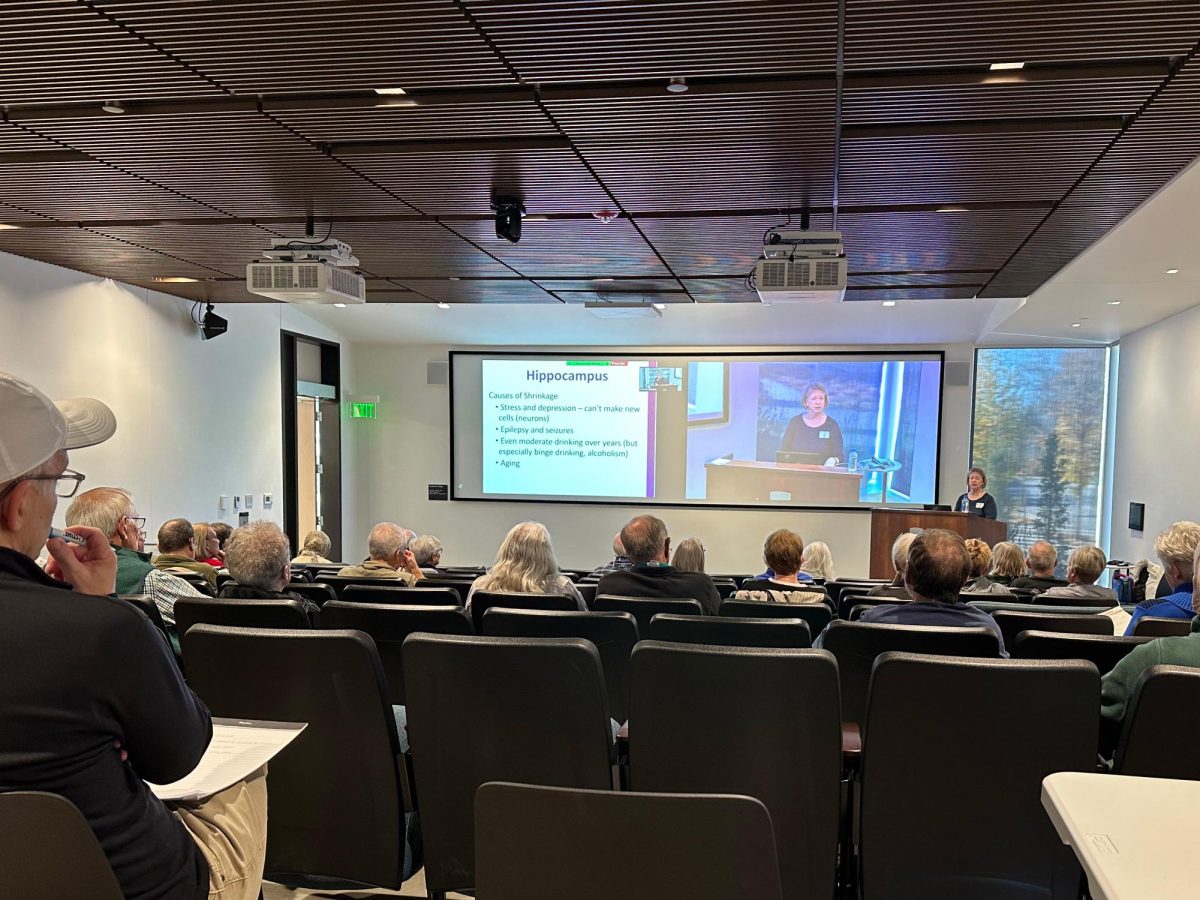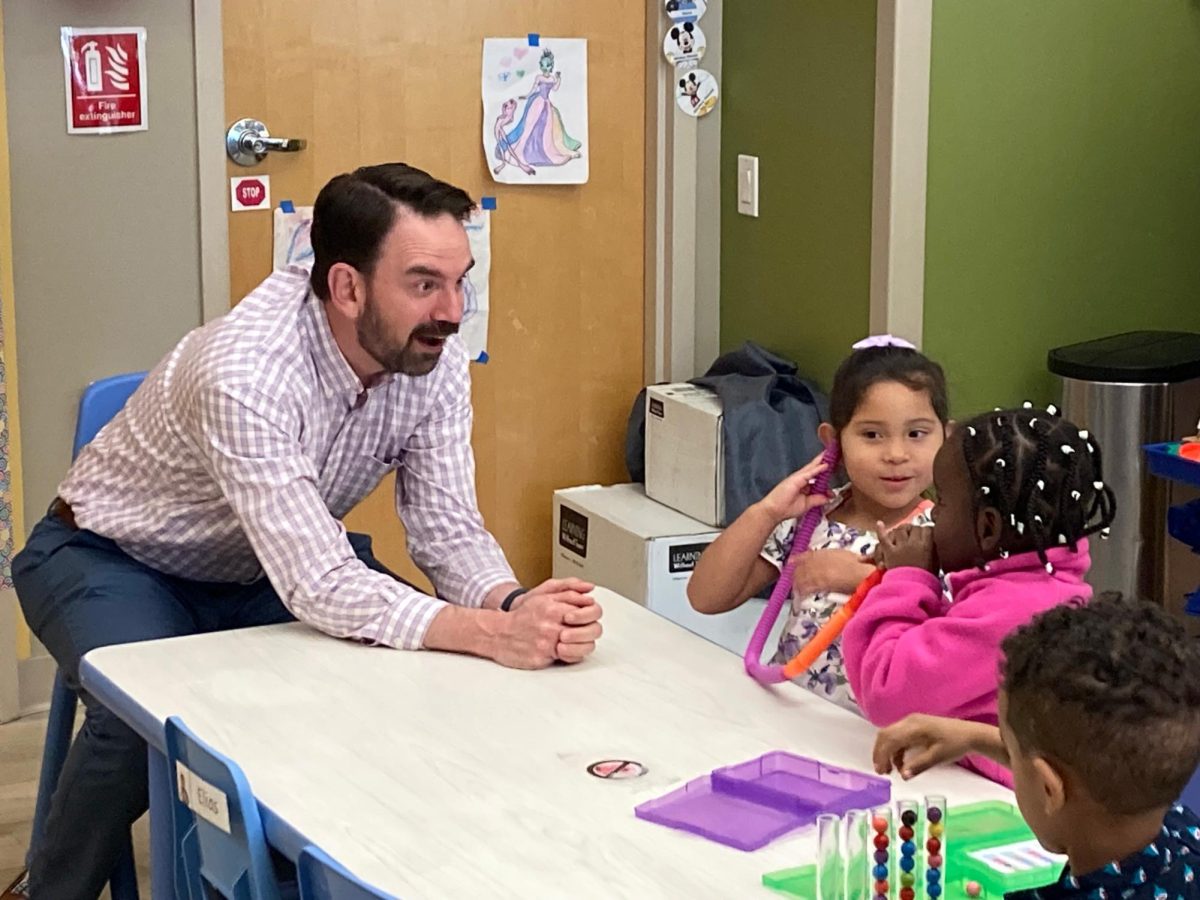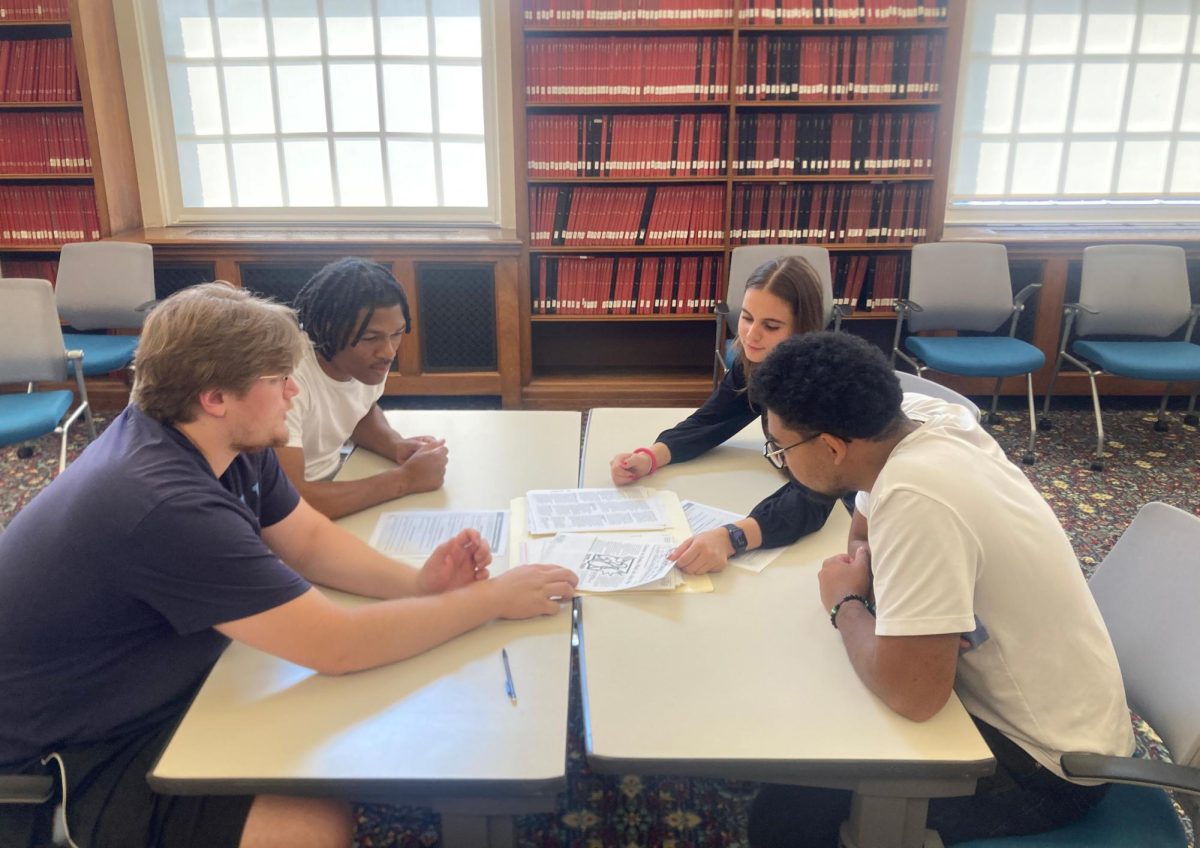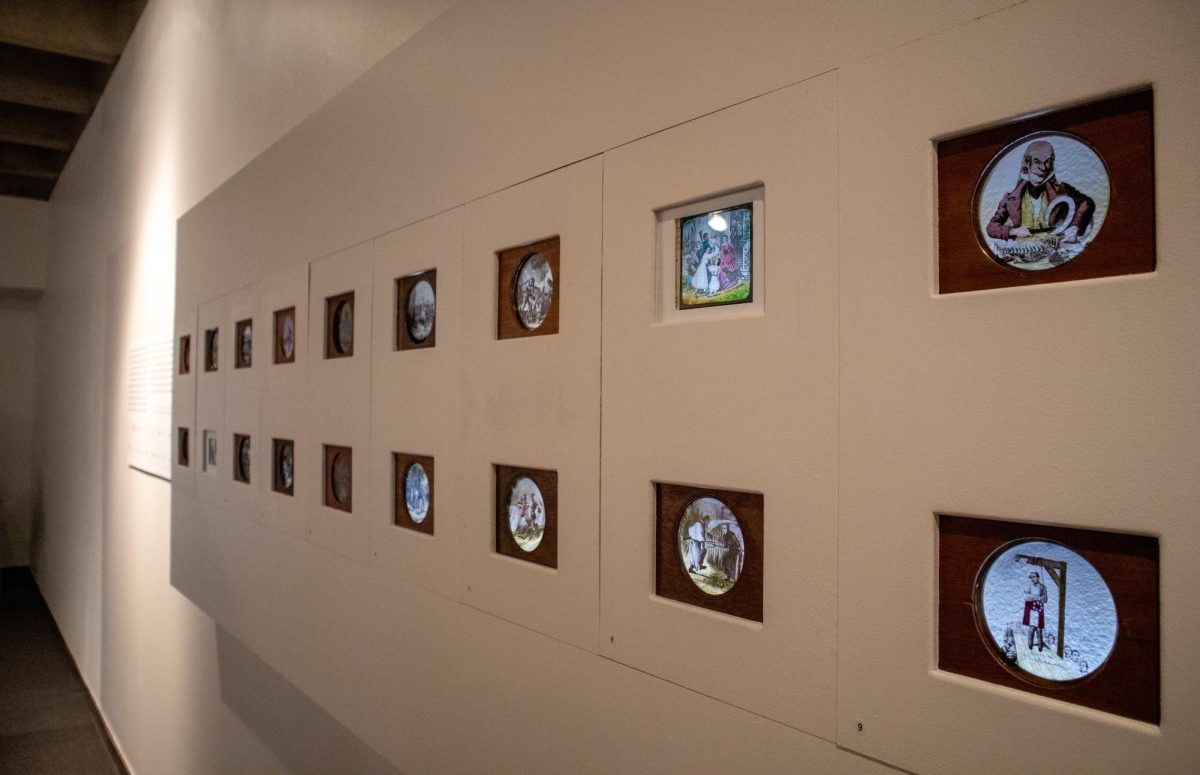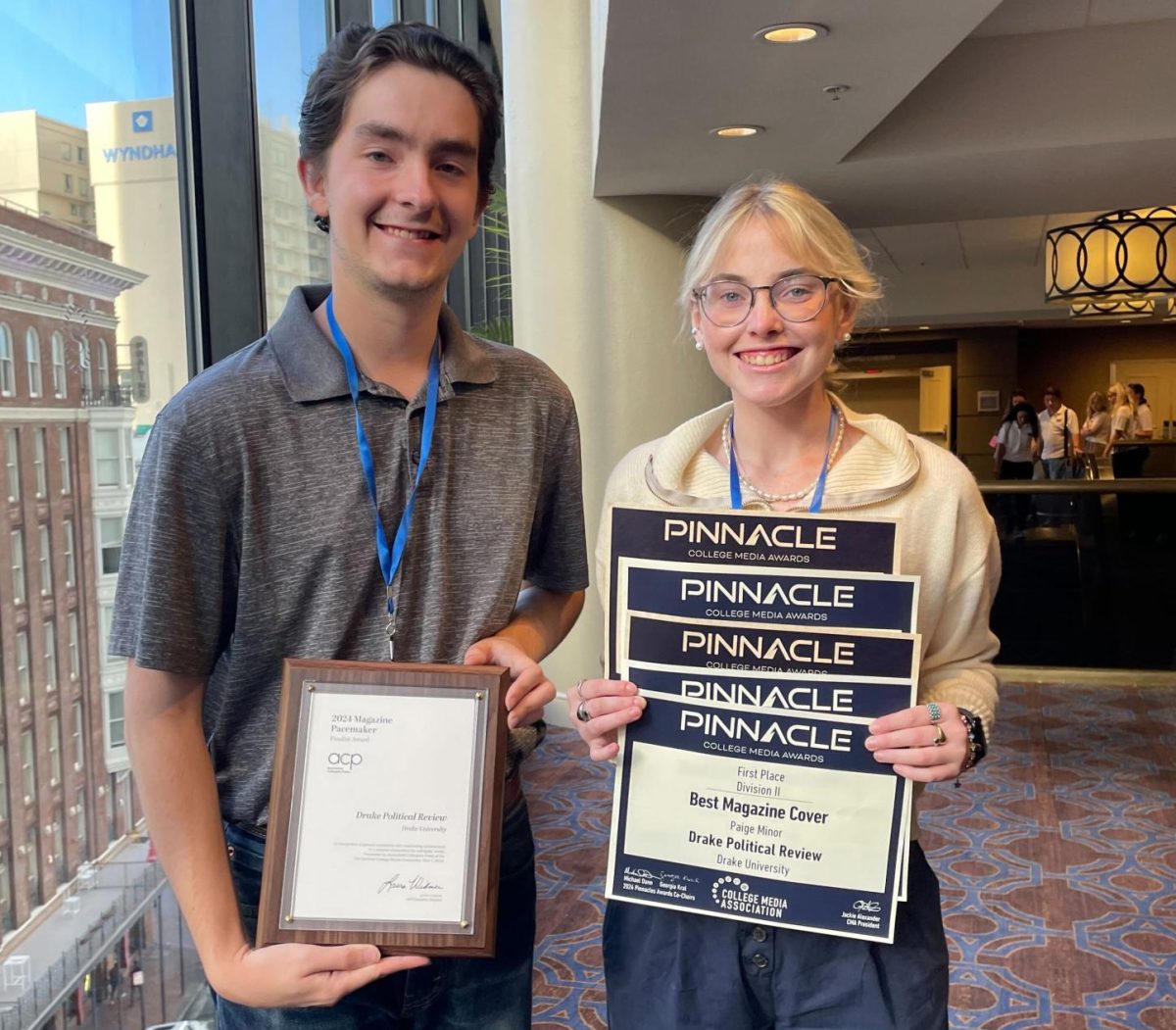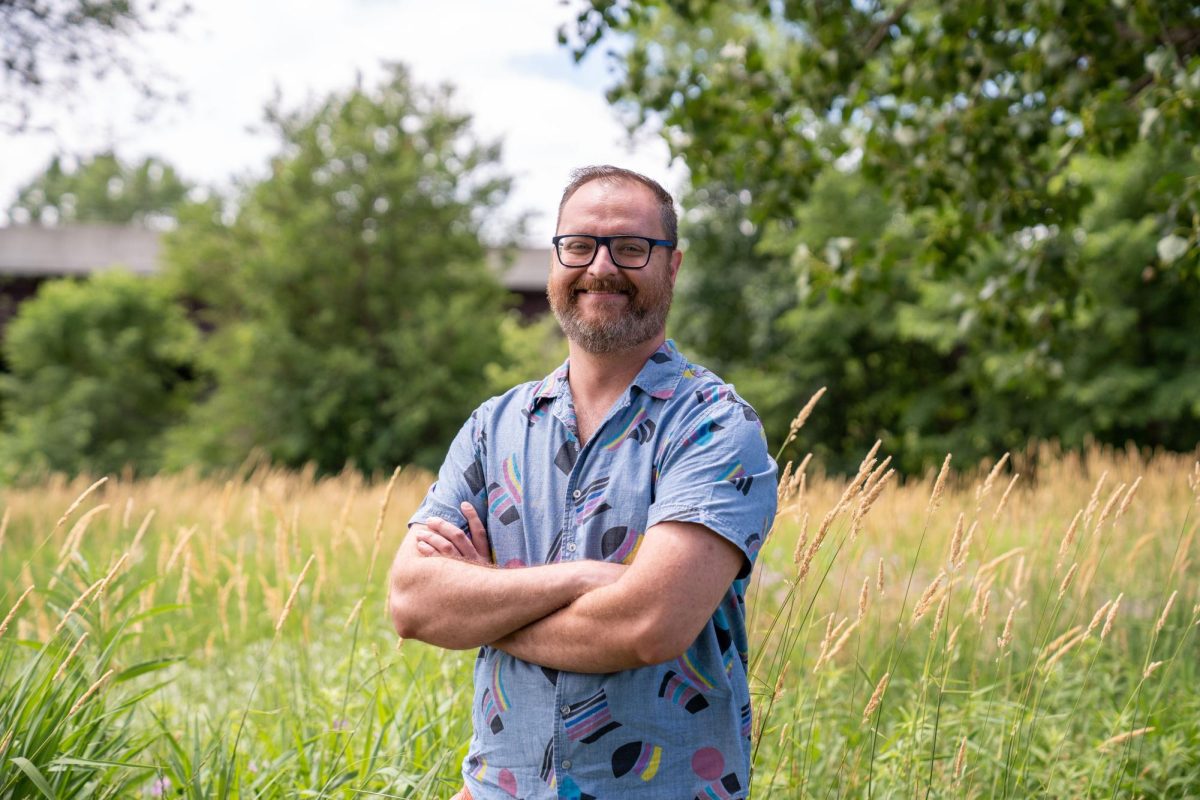Photo by Emily Warner
The Anderson Gallery’s most recent exhibit, “Ape-Rope-Pray-8!”opened last Friday and closes on Feb. 26 in the Harmon Fine Arts Center. It focuses on the appropriation of art and copyright laws regarding art ranging from music to design to paintings. Appropriation covers a lot of different techniques, but basically it entails taking another artist’s work, or parts of that work, and using it somehow in a new work by transforming it or adding onto it.
This exhibit explores the question of whether copyright laws for art should be in place to protect artists and their original work or if those laws limit the creativity of others. There are many factors in deciding whether an appropriation is infringement or not. A big one is whether or not the copied piece is harming the profits of the company or individual who owns the original work. Another is whether the appropriation is different enough from the original.
The exhibit explores the “blurred boundaries between copyright piracy and acceptable quotation or reference to earlier works.” Doris Long, professor of law and chair of the Intellectual Property, Information Technology and Privacy Group at the John Marshall Law School in Chicago, said that deciding whether an appropriation is an infringement or not is “a question of how much reference is too much, how far removed the work is from the original, a question of the intention of the artist and unique creative expression of the work.”
The PIPA and SOPA legislation has become a very controversial issue. It addresses copyright issues as well. These two pieces of legislation are an attempt to stop pirated moves, music and other information and entertainment online. These bills are a threat to art because the Internet is a place where art can be shared freely and openly, and artists can distribute their work quickly and easily. These bills would destroy that opportunity
The PIPA/SOPA legislation would have an effect on students who illegally download music. Sites where this music comes from would get shut down, and the consequences would be much more severe. They would also affect students greatly because sites like Facebook could be shut down. It would be beneficial for Drake students to go check out the exhibit; there are many examples, current and historical, of what exactly appropriation is, and the exhibit also has information and explanation of the copyright laws regarding art.
This exhibit and the PIPA/SOPA legislation raise questions about whether the law should protect the creator, or if it should protect the artist or company that owns the original work. If you want to check out the exhibit, it is open until Feb. 26 and is located in the Anderson Gallery inside the Harmon Fine Arts Center. For more information, contact gallery director Heather Skeens at [email protected].

